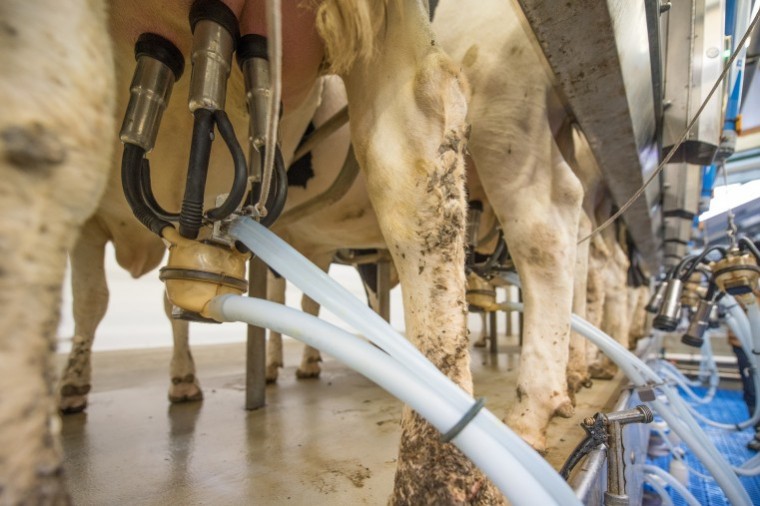Lush, fast growing grass is the perfect feedstuff being relatively cheap to grow and perfectly synchronised in terms of FME (Fermentable Metabolisable Energy), and ERDP (Effective Rumen Degradable Protein), explains Bronwen Pihlwret, nutritional advisor at Quality Liquid Feeds (QLF).
But its low structural fibre content results in it passing through the rumen too quickly to be fully utilised by the cow causing milk constituents to drop.
“Structural fibre from forage is fermented in the rumen to acetate, which is the main precursor to fat production, but as a result of increased rumen throughput, we often see a drop in milk butterfat levels at this time of year,” says Bronwen.
To meet milk contract requirements, producers should be focusing on increasing butterfat levels when cows are at grass.
“This can be achieved through feeding a buffer ration, which includes structural fibre from forage such as stemmy grass silage, hay or straw,” explains Bronwen.
“The buffer feed will slow down the rumen transit rate, allowing the rumen microbes enough time to fully ferment the feedstuff and utilise the nutrients. The increase in structural fibre will also increase the proportion of acetate, helping to maximise milk butterfat production.”
Bronwen explains that including a molasses-based product within buffer rations can help to increase its palatability and digestibility.
“If you’re feeding a lower quality silage or straw in your buffer ration, molasses will enhance the palatability of the feed increasing intakes. It will also improve the digestibility of structural fibre, due to the immediately available energy in the form of six carbon sugars which improves rumen efficiency.”
Bronwen adds that when this energy is combined with the available ERDP in grass the entire diet synchronicity will be greatly improved.
However, she also notes that it is important to continue buffer feeding for the next few months as the nutritional value of grass continues to change.
“As we go through the grazing season, even just a month or so from now, the fibre content in the grass will increase, but sugars will reduce slightly,” she says.
“The molasses in the buffer feed will at this point fill the deficit in grazed grass levels.
“By feeding a buffer feed, producers will be able to maximise the fantastic grazing opportunity this spring and produce the highest possible quality milk,” Bronwen concludes.




